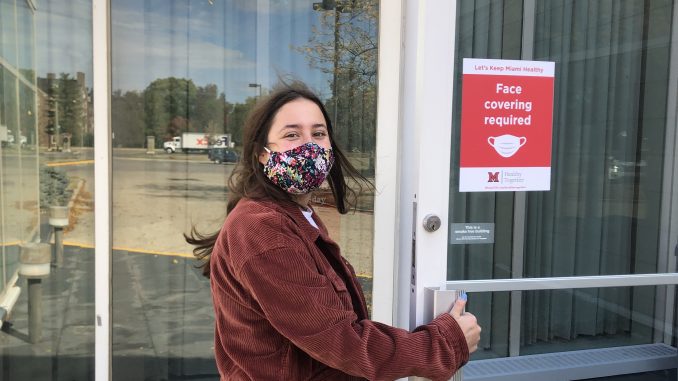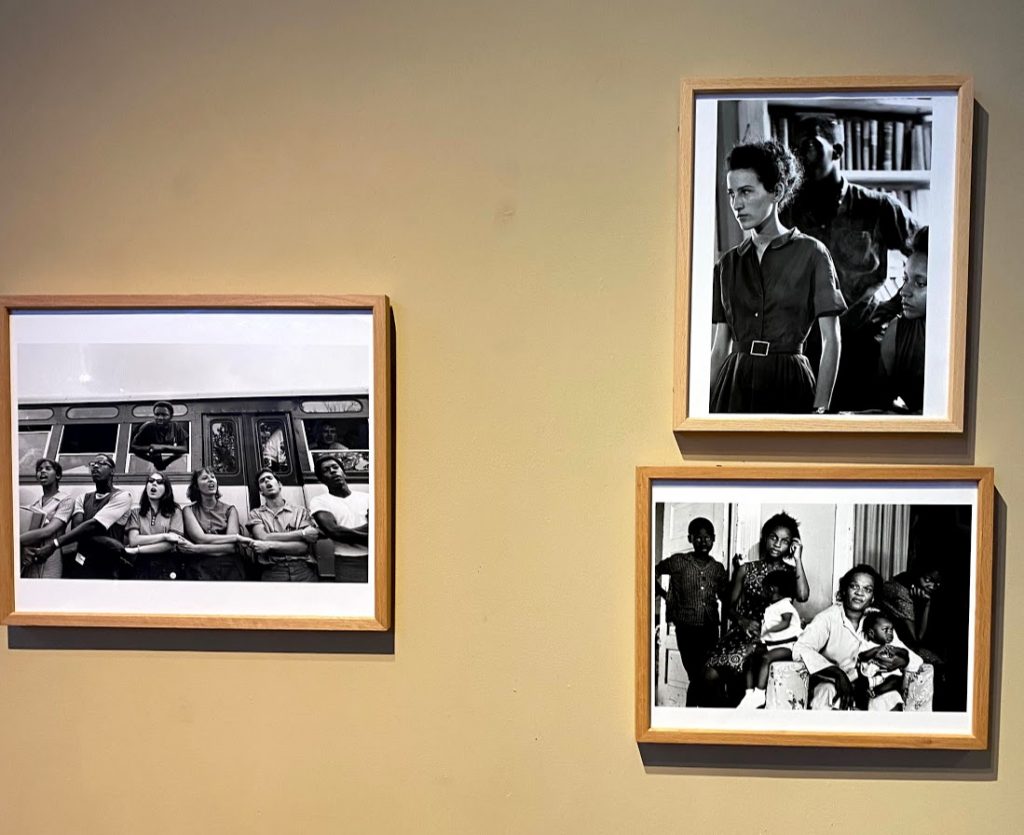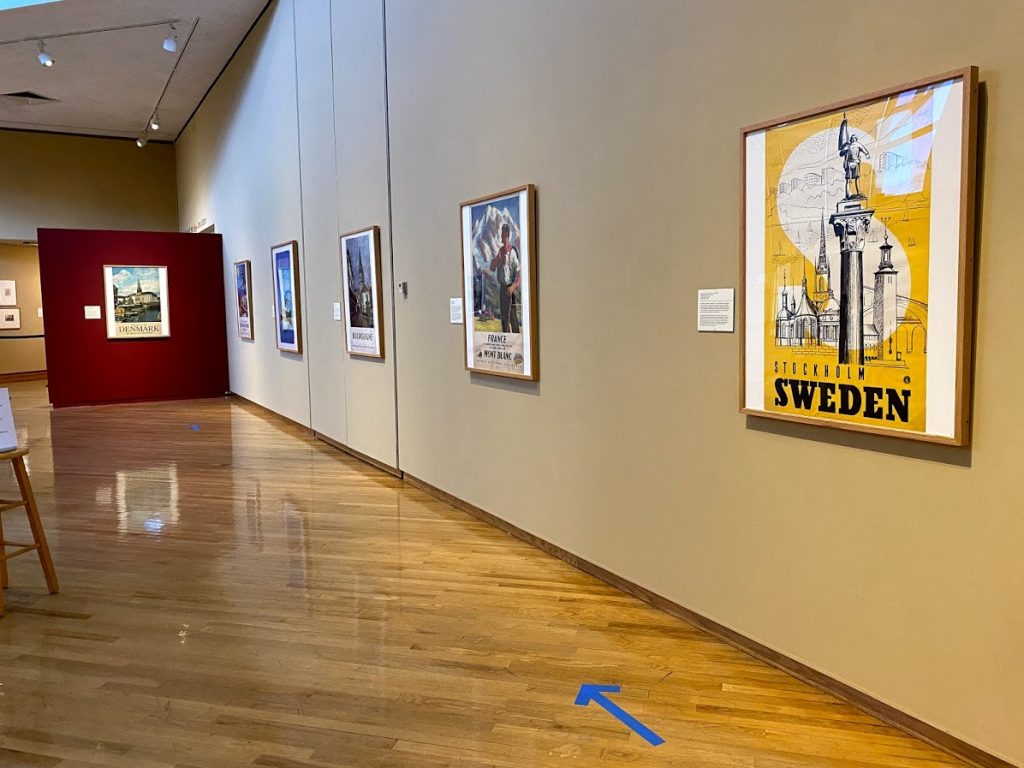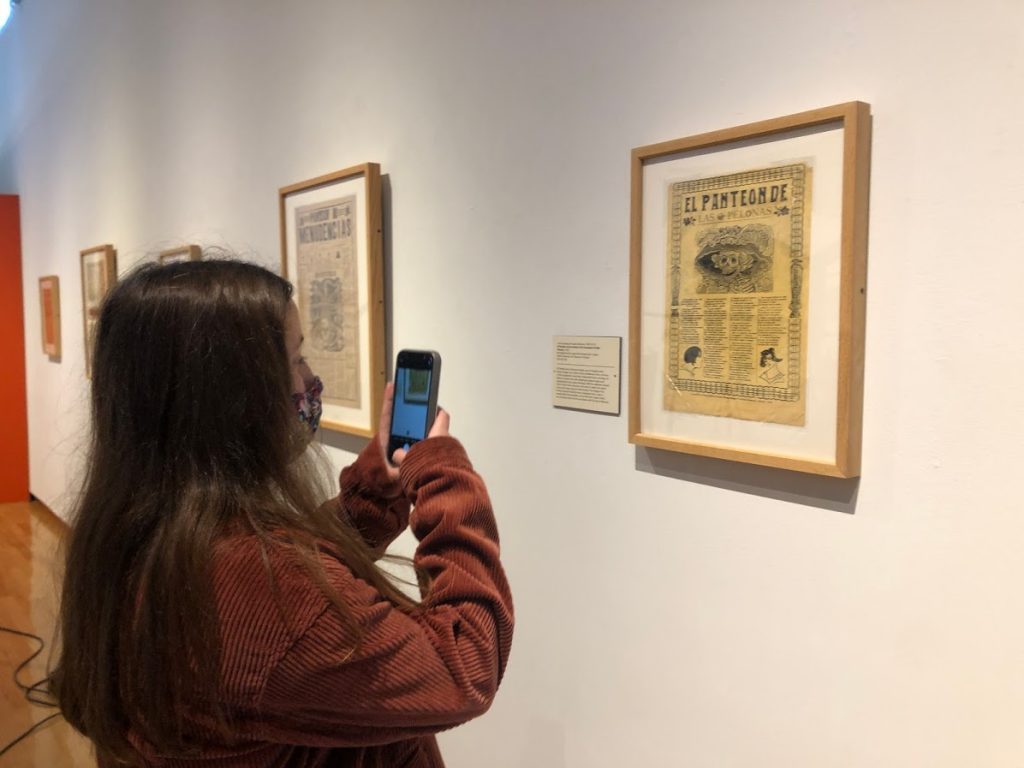
Over the last several months, our lives have been impacted in ways no one could have ever predicted. Now, I think we are all looking for ways to continue doing safe and fun activities that make us feel normal. I recently visited the Miami University Art Museum (MUAM) and thought it was a great way to get out of the house and do something fun. Read about my experience with the new protocols and current exhibitions below!
In order to visit the museum, I went to the MUAM website to pre-register. This allowed me to choose a day and time that fit in my schedule and learn about MUAM’s current policies in regards to COVID-19. After registering, I received an email that confirmed the day and time I chose to visit.
While visiting the museum, guests are asked to wear a mask at all times, limit their group to 10 or less visitors, and remain six feet apart from anyone not in their group. The museum has blue arrows on the floor as well as signs to help guide you through the exhibitions. Staff will greet you when you arrive and remind you of the protocols.
________________________________
The first exhibition that I explored was Chasing Light: Black and White Photography. I was immediately captivated by the photographs and stories that each one told. Some photos that caught my eye right away were Glass Profiles by George Richmond Hoxie, and Contemplation by Edward Kezur. Both of these photographers use lighting and shadow effects to make ordinary objects and moments into works of art. The vignetting of the work Glass Profiles deepened the contrast of light, creating a subtle circular shadow around the glasses that further emphasized the focal point of the picture.

I was also really captivated by the series of photographs by Steve Schapiro relating to Freedom Summer. Each photograph told a different story that reminded me of the importance and relevance of addressing social injustices in our society today. As the title describes in the photo, Chaney Family Waiting to Hear About Their Son, depicts a moment captured of the Chaney family waiting to learn what happened to their son James, a civil rights worker who was murdered after arriving in Mississippi to register black voters. The juxtaposition of the collection of photos about Freedom Summer made me feel a mixture of sad, inspired and empowered. If you get a chance to visit the museum I definitely recommend looking at these powerful images and reflecting on them.
________________________________

Travel Posters and the World Wars exhibition.
After venturing through the black and white photographs, I went deeper into the museum exploring the exhibition, Rebuilding European Tourism: Travel Posters and the World Wars. Unlike the black and white photos from the previous gallery, this exhibition features colorful and unique travel posters from the time period between WWI and WWII when people were yearning to travel and see the world. As someone who has always wanted to travel and hopefully study abroad, I loved getting to see a glimpse of all these different sites around the world. The poster Voldemar Mednís, Besuchen Sie Lettland (Latvia), 1930s, stood out to me because I saw the perspective of another person gazing longingly at the beautiful countryside of Latvia. Another poster that caught my attention was Herbert Leupin’s, Swissair, 1949. Leupin gave me a feeling of wanderlust by showing the inviting bright blue lakes and skies, along with breathtaking mountains.
________________________________

(The Graveyard of Bald Women) by José Guadalupe Posada.
After touring the exhibition of travel posters, the blue arrows guided me back to the front of the museum to the first gallery, showcasing the exhibition Broadsides and Calaveras: José Guadalupe Posada. This exhibition featured Mexican newspapers by the talented and famous artist, José Guadalupe Posada. One of Posada’s most famous works, El Panteón de las Pelonas (The Graveyard of Bald Women), shows a portrait of a dressed-up female skeleton or calaveras. After looking at this newspaper, I was curious to learn more about the meaning behind the art. The brief summary on the panel next to the art mentioned, “With his calaveras, Posada tried to show that everyone was the same in death. No matter one’s social class, everyone dies equally”.
________________________________
I loved getting to visit the Miami University Art Museum because it reminded me of what times were like pre-COVID, and gave me the chance to experience breathtaking and inspiring art. If you are looking for an exciting (and safe!) outing, I definitely recommend checking out the Miami University Art Museum.
After visiting the museum, sign up to join us virtually for MUAM’s upcoming exhibition program, Freedom in Black and White: The Making of a Photographer-Activist , on Thursday, October 15th from 6-7:15 PM. The event will feature famous photojournalist Steve Schapiro, as he discusses his work in the context of American social history. Click here to sign-up!
